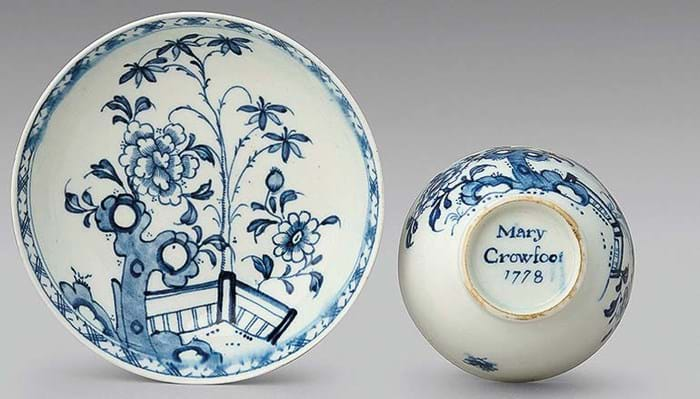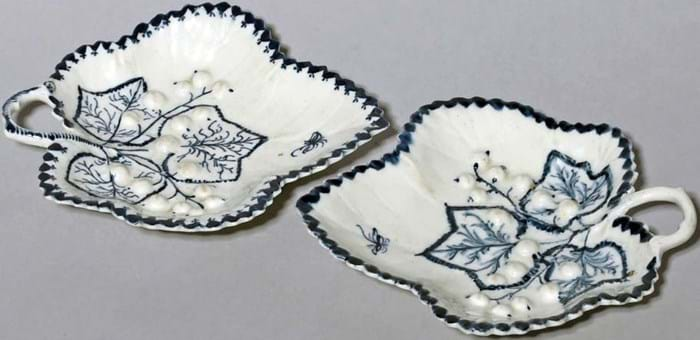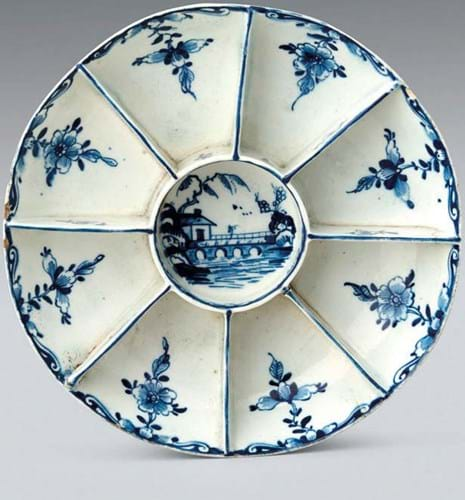Birth tablets, the 3in (7cm) circular plaques made to commemorate new arrivals of local children, are unique to Lowestoft and add to the factory’s great sense of place.
The example offered by Woolley & Wallis (25% buyer’s premium) in Salisbury on September 13 is inscribed Maryann Lifin born November 4 1790. To the reverse is a vignette of a dove holding a leafing twig in its beak.
The Liffin family were closely connected to the Lowestoft factory. Mary Liffin (nee Redgrave) was a porcelain decorator who had married John Liffin in 1785. Her death in May 1795 at the age of 33 is commemorated on the reverse of another birth tablet that records the birth of Martha Liffin on August 17, 1794.
Baptism records at St Margaret’s Church in Lowestoft show Mary Ann Liffin was baptised on November 7. She never married and when her sister Martha was widowed in 1841 they chose to live together. Both are buried at St Margaret’s churchyard.
The auction record for a tablet is that inscribed Thos Anderson Born Sept 13th 1790 and painted to the reverse with an Oriental landscape. Sold at Phillips in 1996 for £4600, it took £14,000 at Sprake in 2006. Prices today are more circumspect: the last offered for sale at Bonhams in 2021, inscribed Mary Rushmer born Octr 29 1796, took £7000.
Mary Ann Liffin’s tablet, formerly part of the celebrated Colman collection of Lowestoft sold by Sotheby’s in 1948, was offered with a guide of £6000-8000 as part of a fine collection of Lowestoft porcelain from an East Anglian family. It got away at the lower end of expectations.
Mary’s teatime

Teabowl and saucer with the inscription Mary Crowfoot 1778 – £2200 at Woolley & Wallis.
Another documentary piece in this collection was a teabowl and saucer painted with bamboo and chrysanthemum and (to the underside of both pieces) the inscription Mary Crowfoot 1778.
Other pieces of this service for Mary Crowfoot of Beccles are recorded including a teapot and a cream jug that were sold at Sotheby’s in the early 1960s. This tea bowl and saucer took £2200.
Equally emblematic of the factory output are the ‘trifles’ inkwells made as tourist souvenirs. All are inscribed by the same hand, probably that of Robert Allen. Most are painted in coloured enamels and only a few are recorded in underglaze blue.
The majority read A Trifle from Lowestoft but the example here (of a slightly waisted cylindrical form that is dated to c.1790) is inscribed St Margret Parish Church of Lowestoft – a reference to the best known building in the town. The church, which features on a number of Lowestoft wares, had a change of vicar in 1789 with the new incumbent the Rev Robert Potter.
This inkwell, with the decoration someone rubbed in the firing, sold at its low estimate of £4000 to an online buyer.
Extra rarities
Two extra rarities in this collection – which also included the £17,000 ‘herring smoker’ mug featured in last week’s News pages (ATG No 2560) – generated more in the way of saleroom competition.
As the piece illustrated in Geoffrey Godden’s book Lowestoft Porcelain, a blue and white hors d’oeuvre dish c.1765, partitioned with eight compartments around a circular well took £5000, while a pair of large leaf shape pickle dishes c.1768-70 as pictured in Early Lowestoft by Christopher Spencer sold at £3500.
The latter are of particular note for the moulded sprays of raised berries and leaves.


















